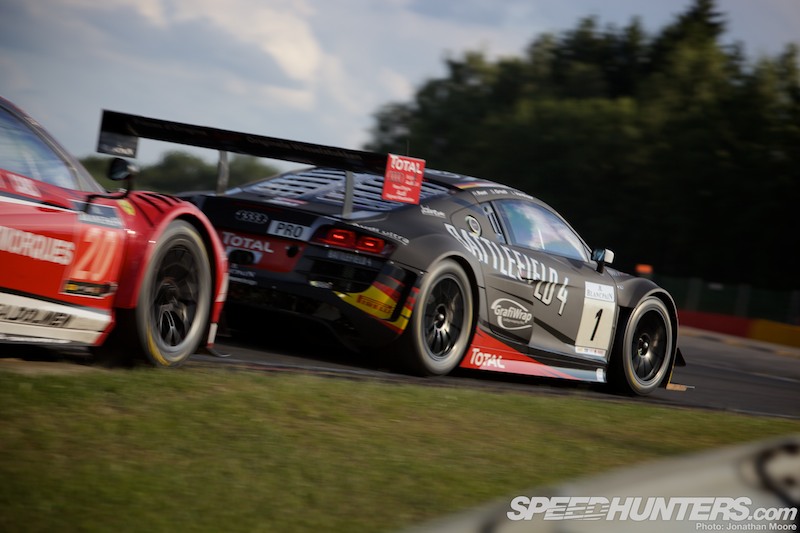
Spa weekends are usually associated with calm and relaxation. A quiet break in the country. Taking in the healing waters. The tranquil forests of the Ardennes in Belgium might tick those boxes, but the monster that lurks within, the Spa-Francorchamps racing circuit, is anything but relaxing – especially not during the annual 24 Hours endurance marathon. It’s a 24 hour fight. But that goes with the territory.
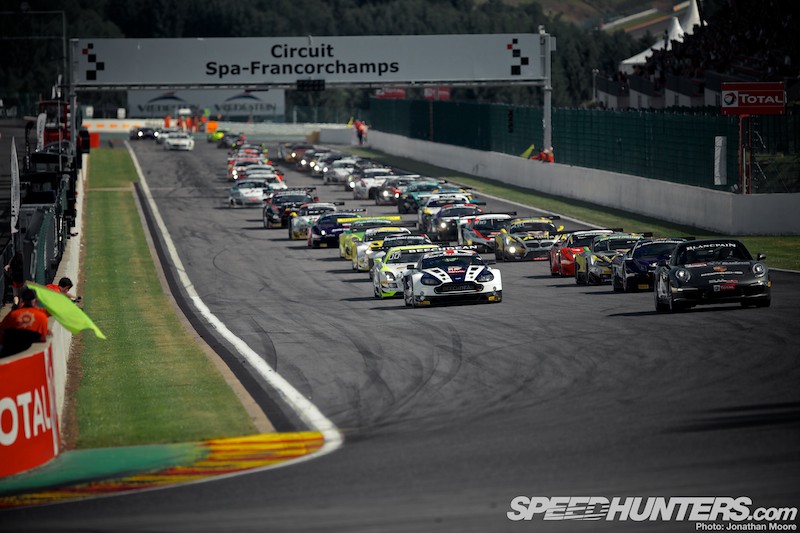
Each of the three major European endurance classics have very different characters. Le Mans has prototypes in the mix; the Nürburgring the melting pot of GTs and production cars. But the Spa 24 is understandably seen as the best race for pure-bred GT cars anywhere in the world. It’s got the cars – 66 GT3s this year. It’s definitely got the track. And the challenge of any 24 hour race is beyond doubt.
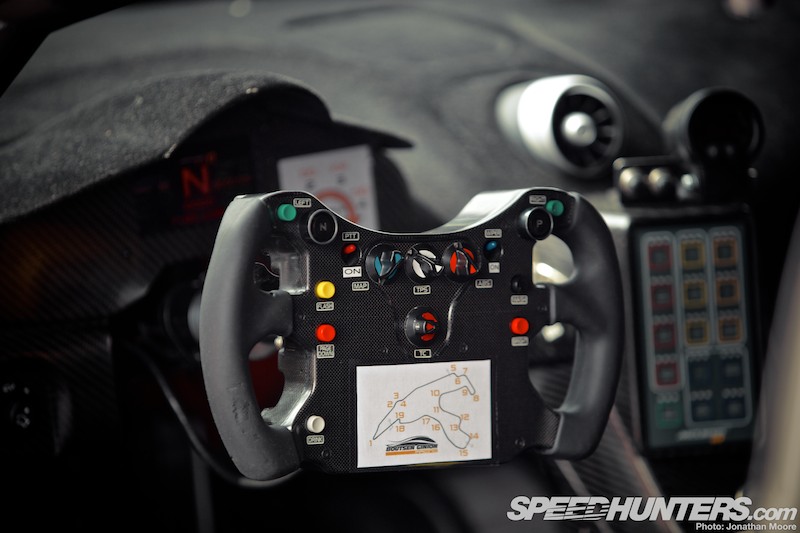
I’m sure many people have nostalgia for the days when the race was run for touring cars, which produced some legendary battles (and a hatful of wins for BMW), but since swapping to a GT format in 2001 the Spa 24 Hours has got faster and meaner: feeding the voracious appetite of this track for speed. The course may have got shorter since its inception in 1921, but Spa hasn’t got any easier. This year around a third of those 66 starters failed to finish.

The crib for Spa is nature itself. The track isn’t carved out of the landscape, but draped over it.

Racing co-exists with nature, and well aware who is the master. And possibly who emits more dangerous gas into the environment.

The original 14 kilometre track still winds its way through the local villages; most mornings I would deliberately take the long route that hooked through Stavelot and down to the infamous Masta Kink (known as the most dangerous corner in the world at one time) before climbing up to where old meets new at Les Combes. Passing through Stavelot also meant a chance to drop into the Musée Du Circuit: a small but interesting collection of cars that have graced the track over the years.
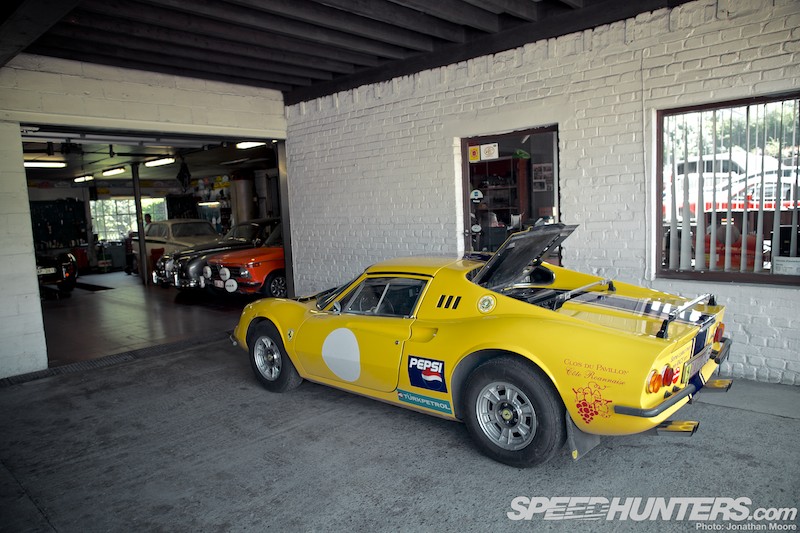
On the exit of Stavelot is the Mathoul Oldtimer garage: a local race-prep workshop which goes back to the ’60s. We took a look at the amazing contents during last year’s 24 Hours; a new line-up of goodness was in the shop this year, including twos Dinos, an Escort MkII and Marcos. If you turn up to Spa and find you accidentally forgot to bring your classic car to the race, you need look no further.
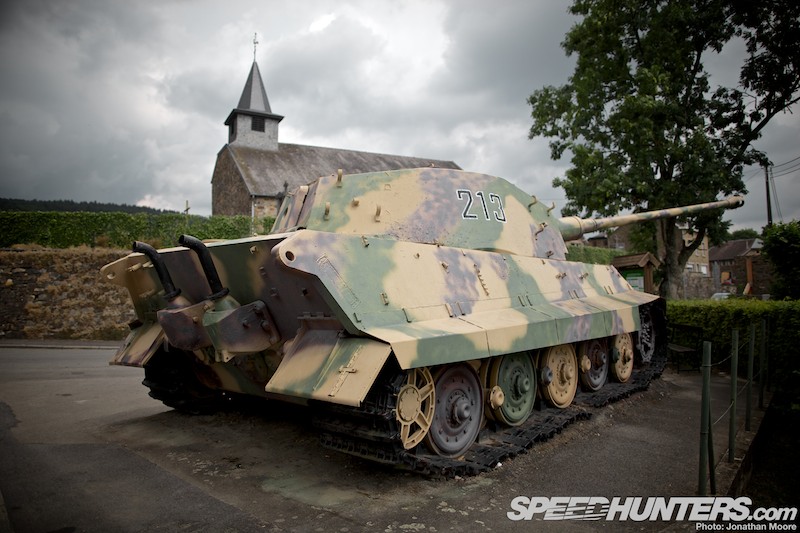
Historically speaking, the other major event to hit the area was the turmoil of the Battle Of The Bulge, which raged through Spa back in December ’44: evidence of that bloody conflict is also all around, both in the names of battlegrounds and in literal commemorative form – such as this huge Tiger II.

For the location itself, there’s definitely the good, the bad… and the ugly. The track is beyond question of course.
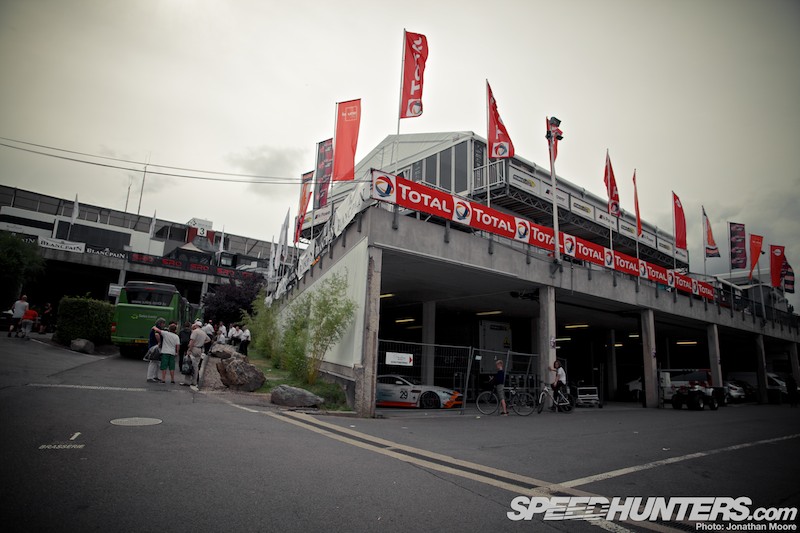
I’m not being disrespectful here, but Spa is the obvious result of the organic evolution of the track over the decades. The infrastructure is… intriguing. The modern paddock teeters on a steep slope, which necessitated the building of multi-level concrete tiers between the newer F1 pit-lane at the top and the sloping ‘endurance’ pits below. To navigate from bottom to top is best done with crampons and a strong heart. Shuttles navigating through the paddock act like they’re trying to shake a tail, the number of turns and switchbacks they have to take.
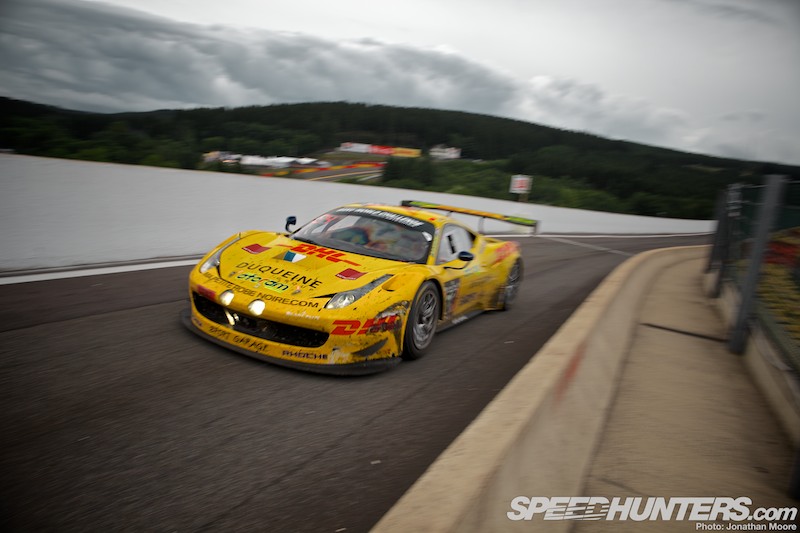
With the removal of the classic Bus Stop chicane that used to complete the lap (a heinous crime in my opinion), the new chicane pushed the pit-lane entry off the edge of a literal cliff, meaning it now runs along a narrow causeway atop a manmade bank hanging off the side of the hill…

The pitlane exit is just as unconventional. Where the track crosses the river – that of the legendary ‘red water’ of Eau Rouge – there’s a huge bump that the cars have to hop over. It’s a reminder for all the drivers that you never get to relax at Spa.
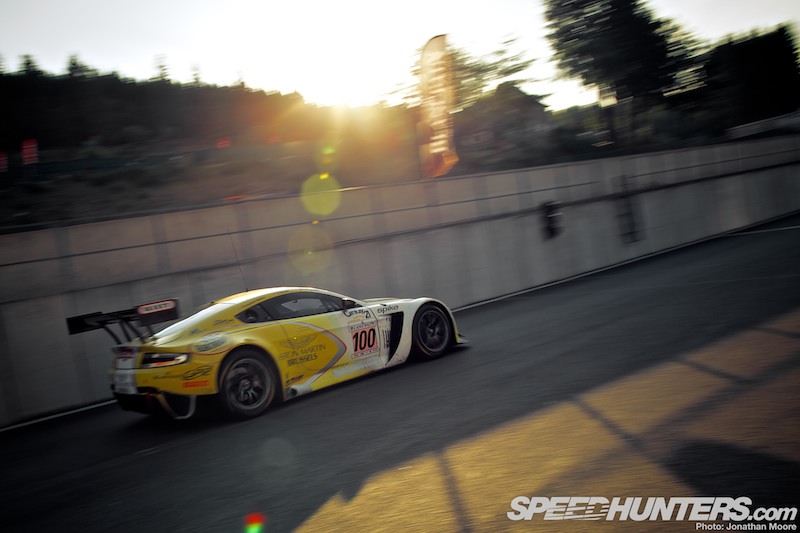
If you want to shoot at the La Source hairpin, it means navigating an obstacle course: sprinting across the live pitlane, clambering up a precarious ladder whilst trying to keep cameras in one piece and then walking along the raised walkway to the corner’s apex.
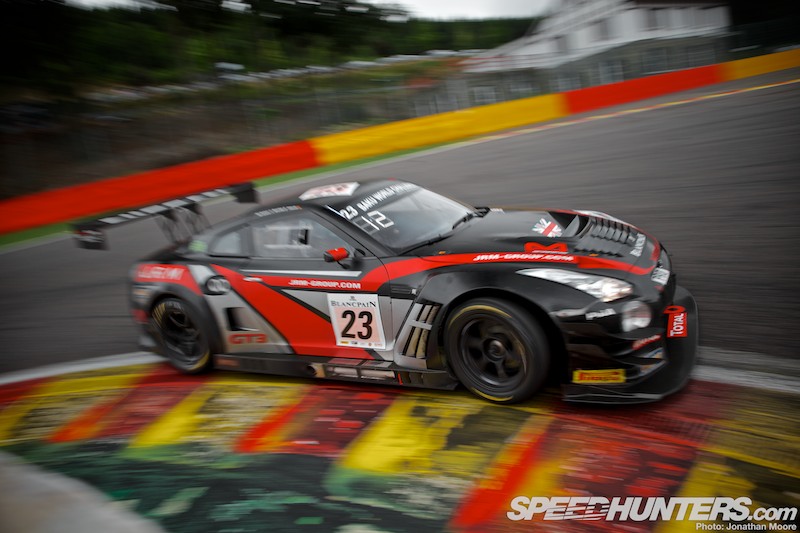
Of course, once you’re there the reward is worth it. You can literally reach out and touch the cars.
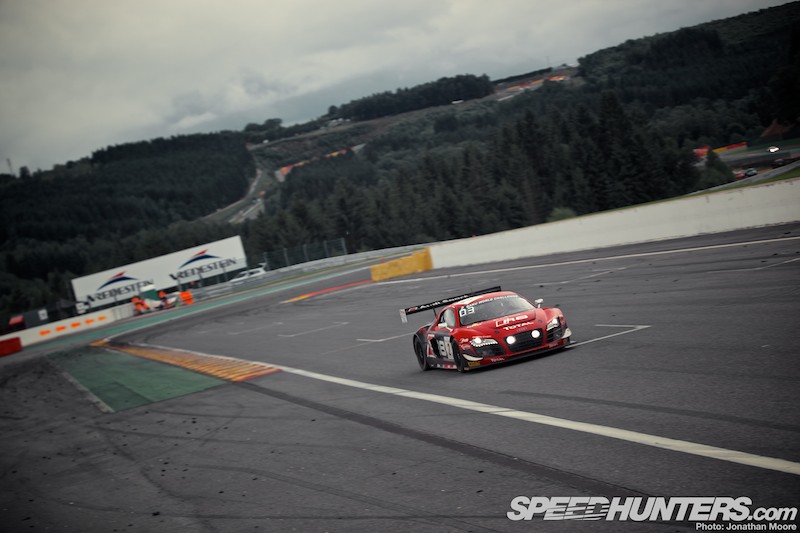
But all this quirkiness is what makes the track so special. There’s no hint of homogenous F1 circus here: more that of a grand old lady who’s never really grown out of being a stroppy teenager or been able to follow rules.
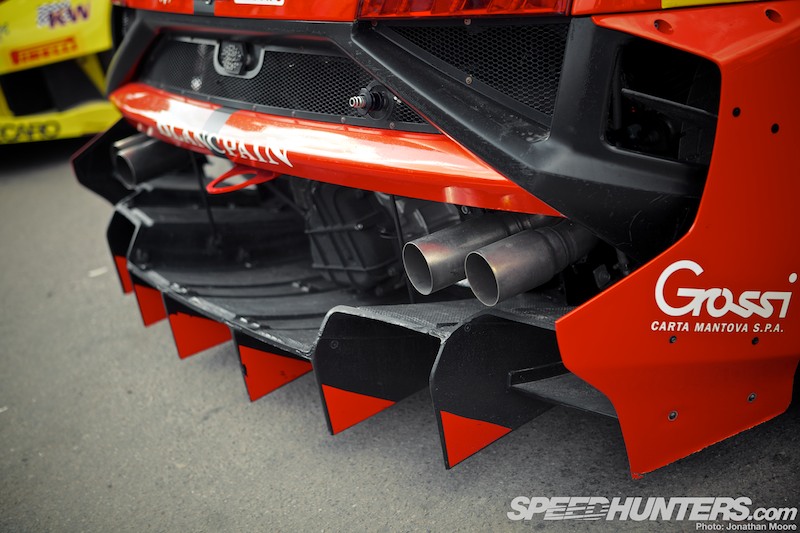
The 2013 Spa 24 Hours had a strong support ticket as ever, with single seaters and national GTs, but I couldn’t help but laugh at the new aero on the Lamborghin Super Trofeo Gallardos: savage weapons in gentleman form! They really are outrageous…
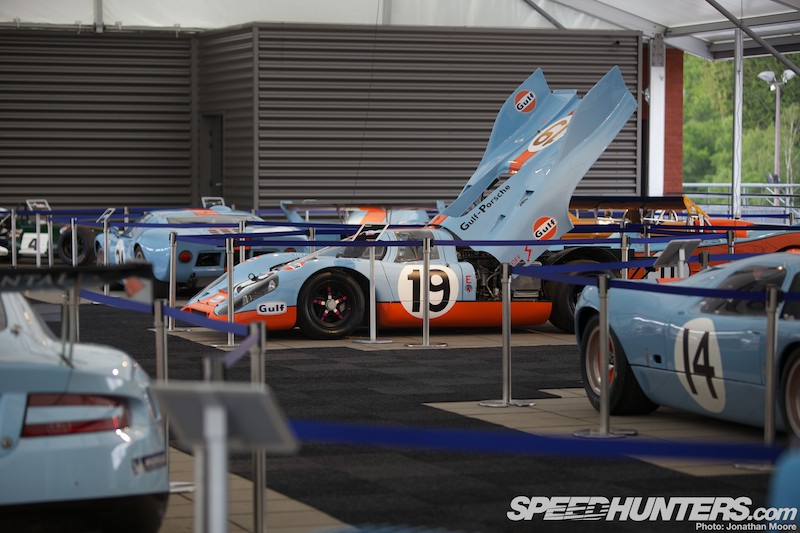
An unexpected treat was that a fair proportion of Roald Goethe’s utterly sublime Rofgo collection of racing cars was being shown off on the top floor of the pit building. Tens of millions of pounds worth of powder blue and orange motor racing artworks; I’ll be showcasing the collection in a later story.
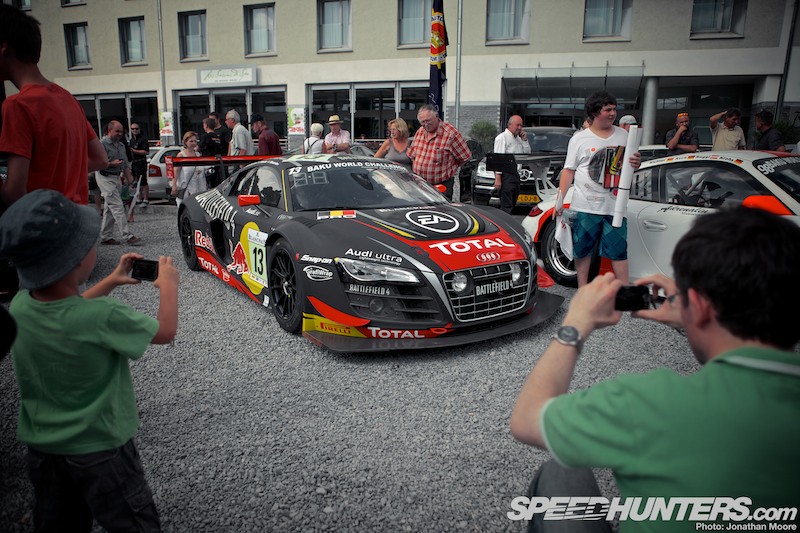
So those cars then, GT3-spec all. The class seems to have seriously muscled up this year: compared to the older cars running in the Gentlemen Trophy, the new cars have obviously undergone a course of steroids over the winter.
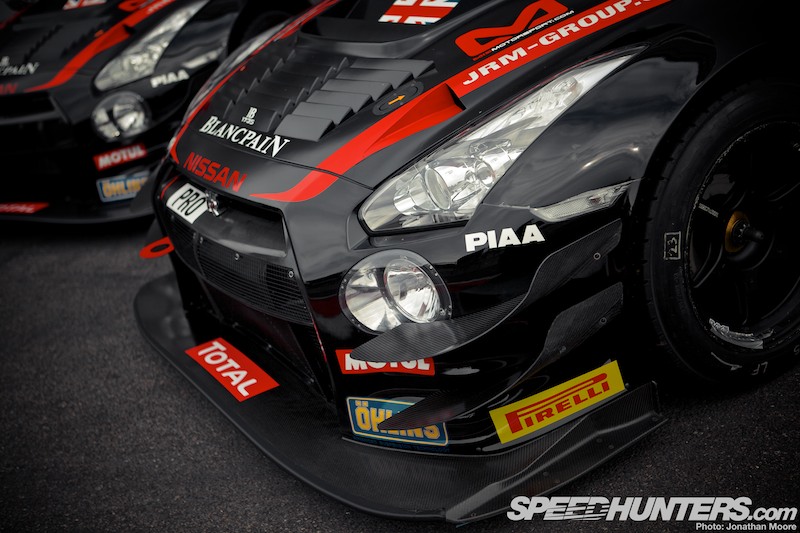
The rear wings are as big as ever, but all the cars now seen laden with even more aero parts and bristled with dive planes.
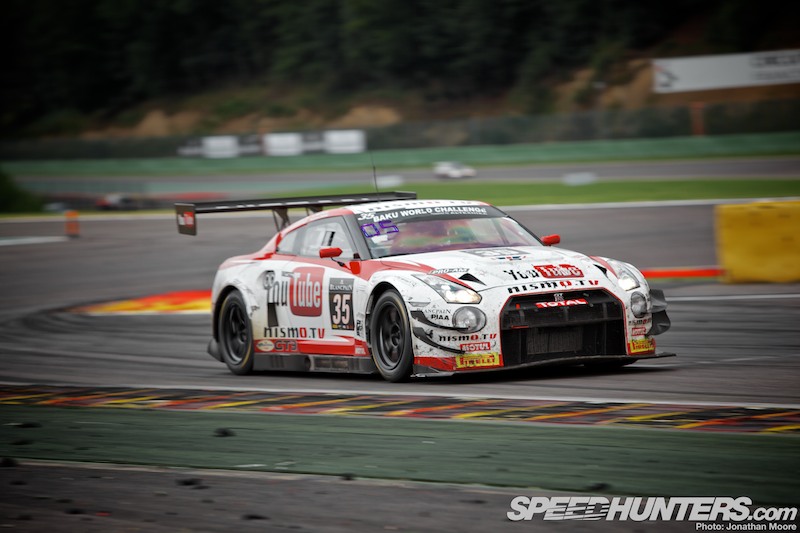
This is a blue riband event that every manufacturer wants on their CV. Nissan came out with a quartet of brutal GT-Rs, which are now look every bit the equal of their GT1 predecessors…

McLaren entrants were also larger in number this year: a round 10 MP4-12Cs were taking part.
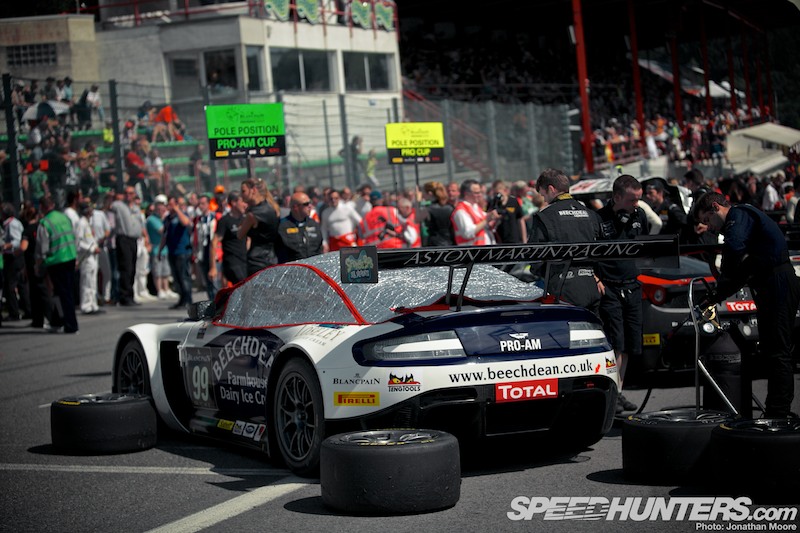
Four Aston Martin Vantages were entered, three by local team GPR and one by British GT regulars Beachdeen. The latter showed that being a Pro-Am car amongst the Pro Cup teams was no obstacle if the right driver was in the car for qualifying: ringer Stefan Mücke put in a stunning lap to stick the car on overall pole for the race.
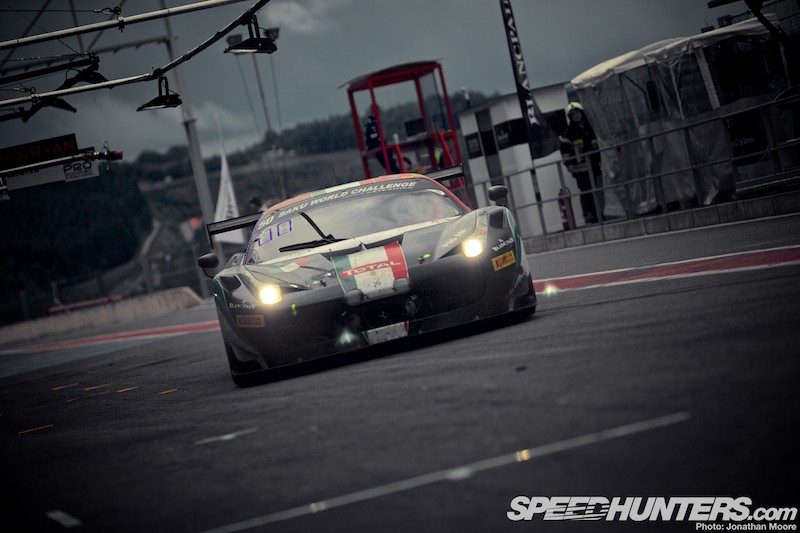
Lamborghini’s single Gallardo GT3 looked rather simplistic compared to the Veneno-style overload of the Super Trofeo cars, and there were so many Ferraris it was almost like a separate Ferrari Challenge class. 16 458 Italias had been spam-spawned in the paddock.

Then there was the big quartet: the German steamroller. Porsche were represented by a usual strong line-up of teams, none more so than Olaf Manthey’s elite squad…
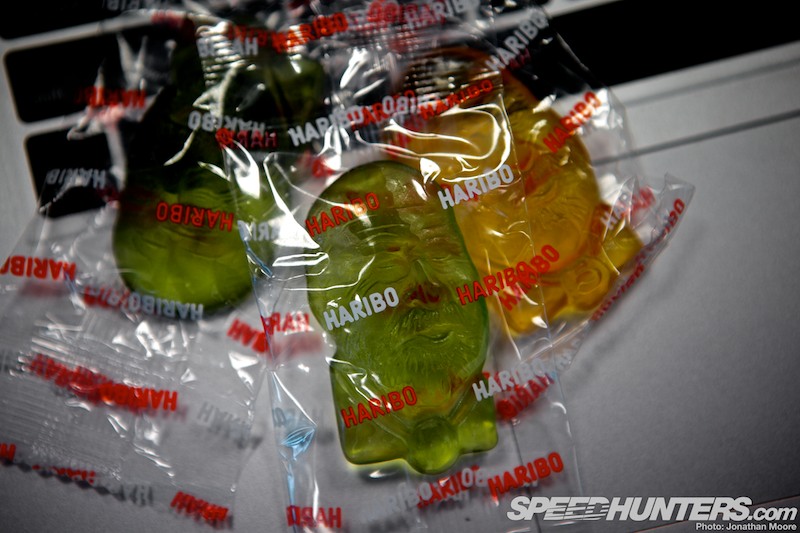
… whose presence was also celebrated with special edition Haribo sweets being handed out by Porsche’s PR!

The deep rumble of the Mercedes-Benz SLS made them one of the most easily identifiable cars out on track…

… similarly the harsh shotgun-downshifts of the Z4s.
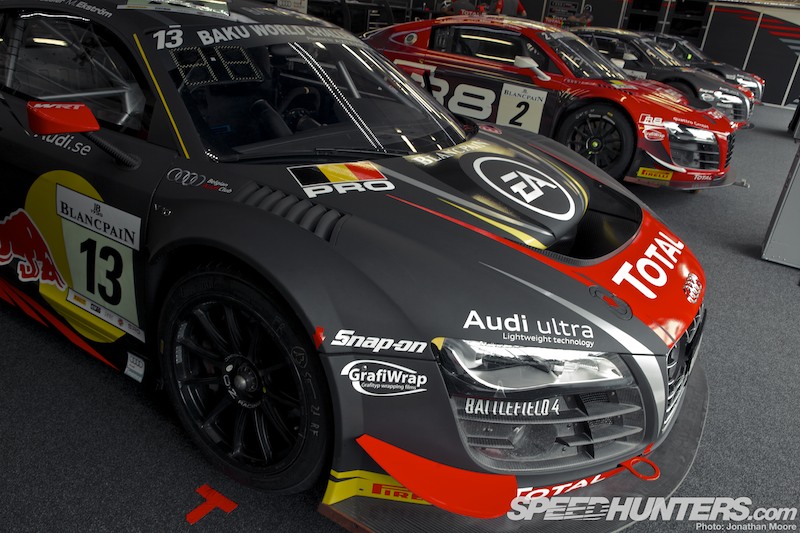
Audi have swept this race for the last couple of years, and the Belgian WRT Audi team dramatically upscaled to be the main protagonist for the R8 LMS ultra: four cars were packed into their garage.
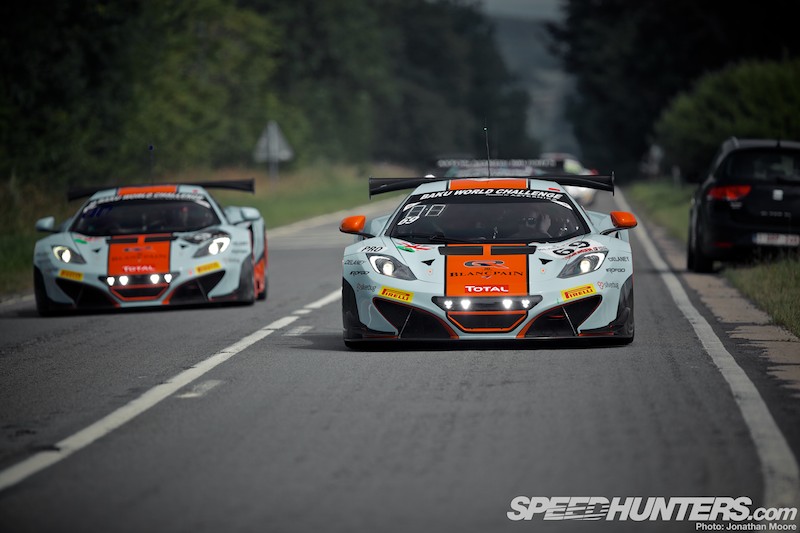
Race week had started with the traditional Wednesday driver parade from the track down to the town of Spa (the track is actually closer to the village of Francorchamps, hence the hyphenated circuit name). The entire grid of cars for the 24 Hours (plus more racers from the support series), cruised over the local roads and dropped down into the town, about five kilometres away.
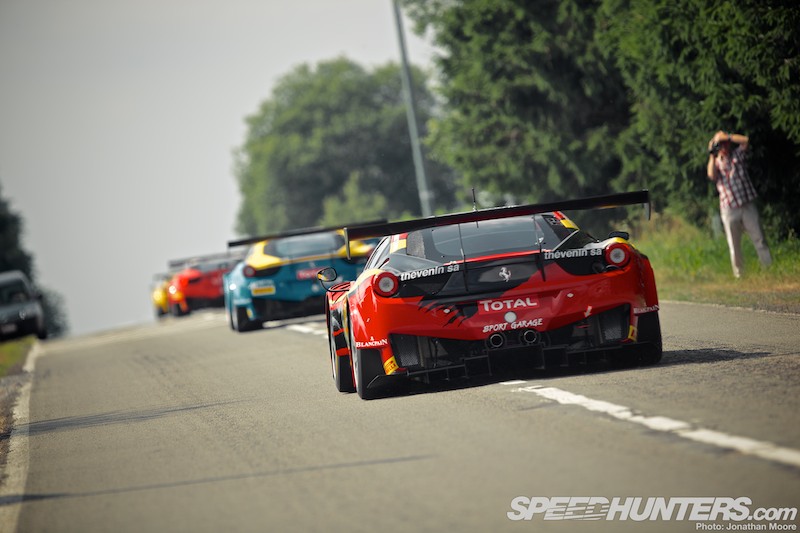
I’d taken up a place at the crest of one of the straights – up to the last minute there was still two-way traffic, until a duo of police motorcyclists came buzzing along, literally driving anyone off the road who was coming towards the oncoming GT blitz.
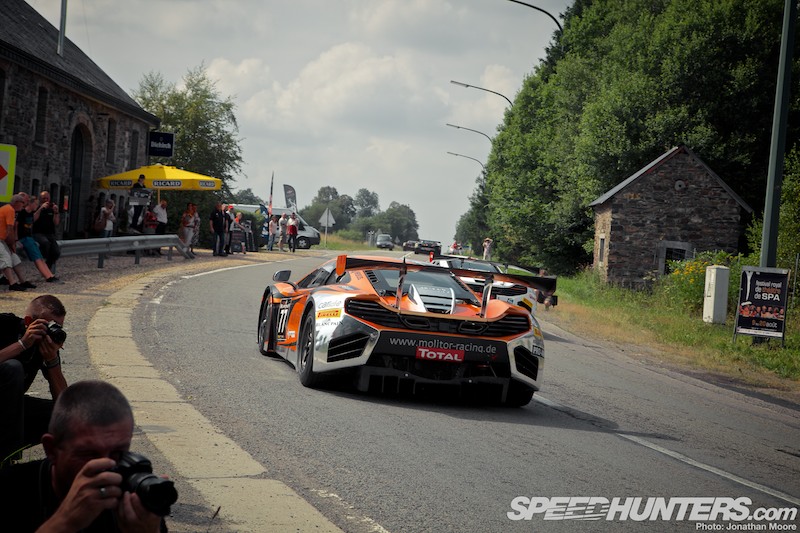
It really was quite something. Divided by marque, an entire squadron of Porsches would pass, followed by all the Ferraris, the McLarens…
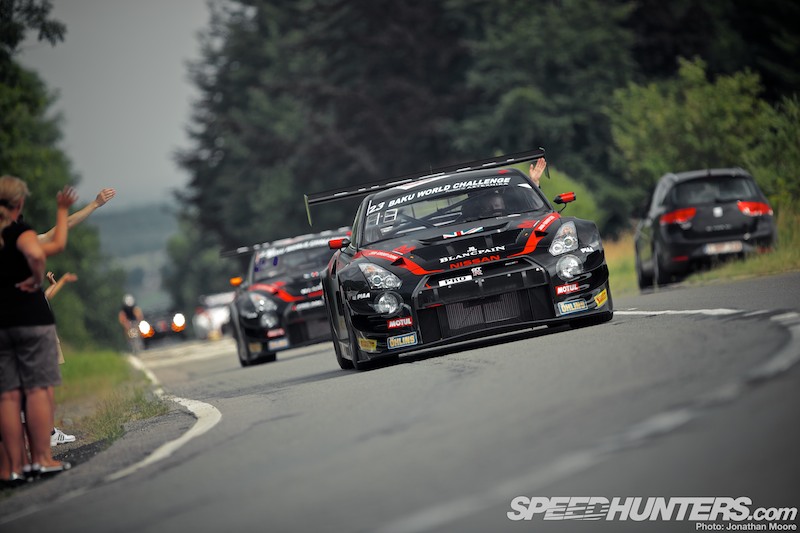
… the Audis, the Nissans and so on.
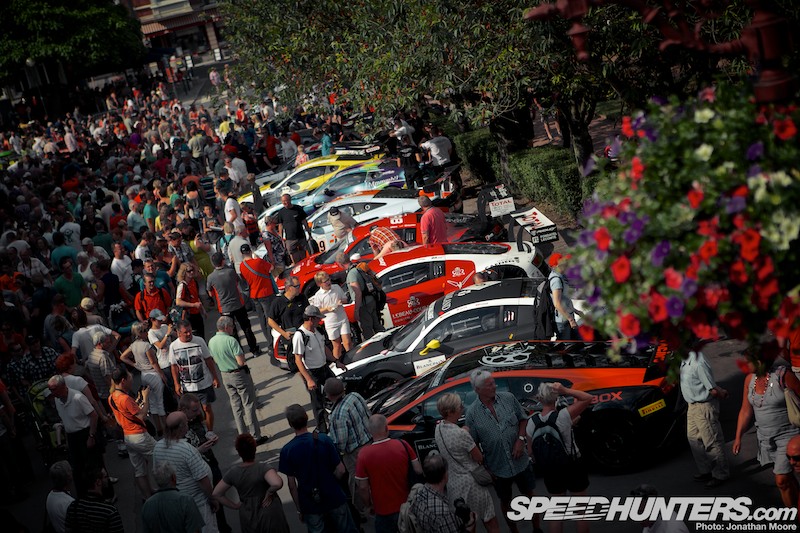
Even though I’d seen all this go past me, the sight at the arrival point still knocked me for six: the entire town was awash with cars and people. No barriers, no security, just an amazing opportunity for the fans to get up close with the cars, drivers and teams.
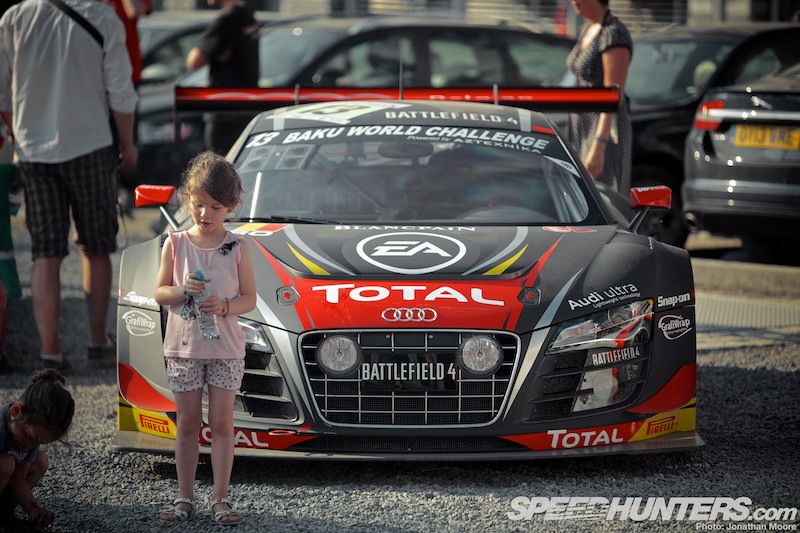
It’s one of those events that makes fans for life.
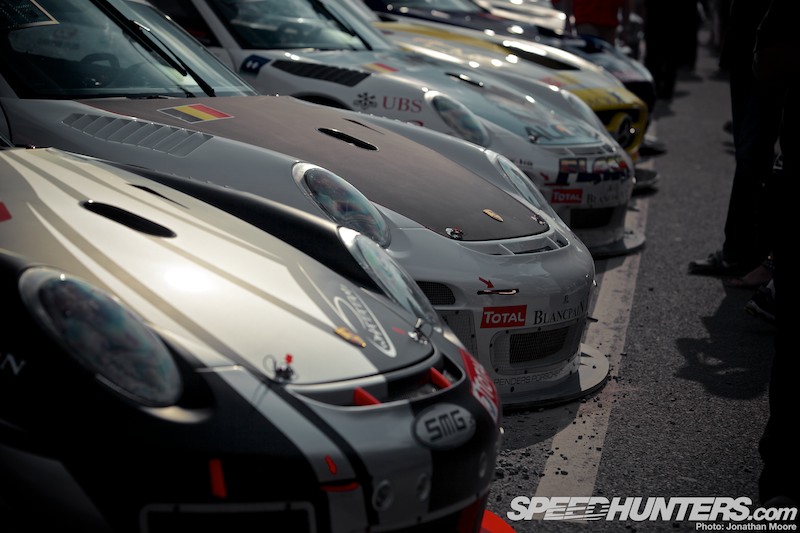
Wandering around the pits earlier that day, I’d wondered why a number of cars looked like they had distinctly second-hand looking bits of carbon. When I arrived in the town, I realised why…
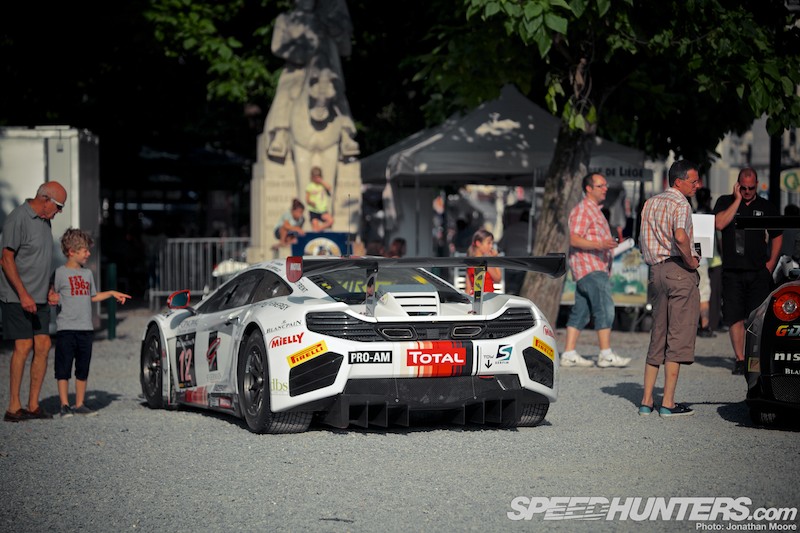
There was no ceremony for parking the cars up. They were driven over the pot-holed roads of the town, pushed up pavements and over gravel. The smart teams looked like they’d jacked up the ride height and fitted their oldest tyres and used splitters.

Getting them back down to the road later caused plenty of wincing as splitters ground against tarmac
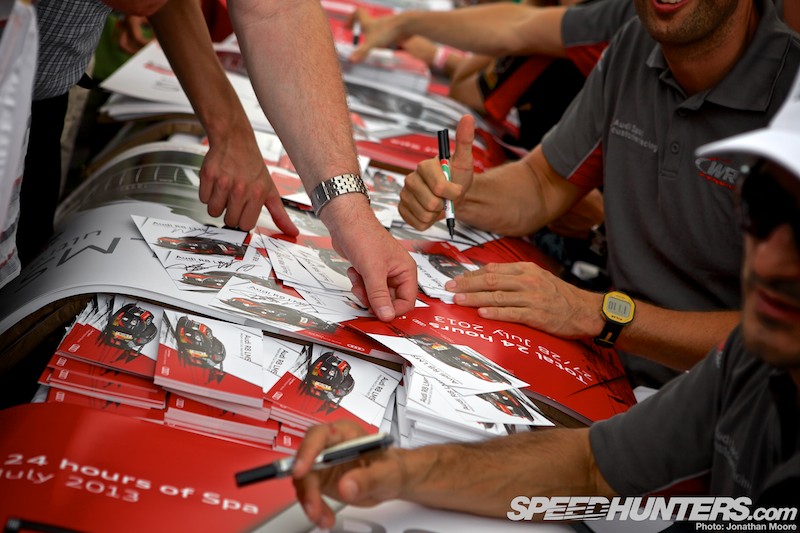
A long line of tables had been set up for an autograph session and for a couple of hours there was a twister of fans around the drivers as people queued up to add to their collection of posters, flags and signatures.
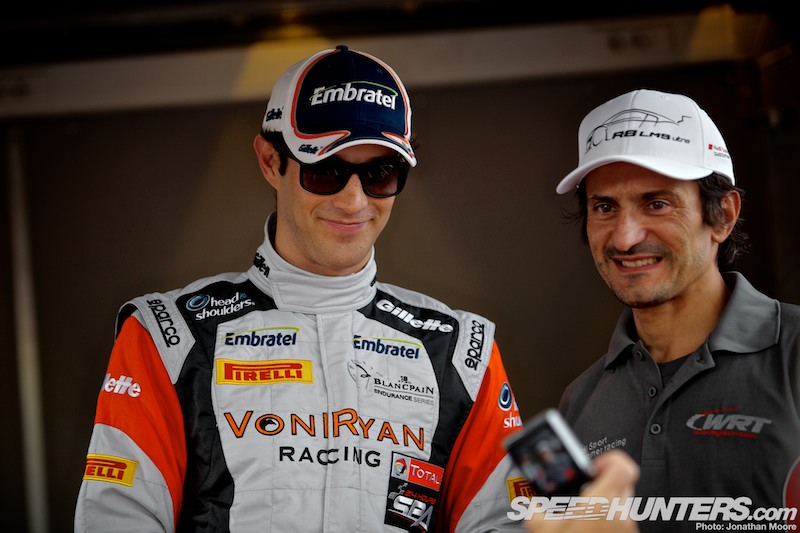
Bruno Senna seems to be enjoying his sojourn from F1 and keeps turning up at GT races, looking very much at home alongside the veterans. Following his Le Mans GTE outing for Aston Martin, at Spa he was driving for the Von Ryan McLaren team alongside his manager, Chris Goodwin.
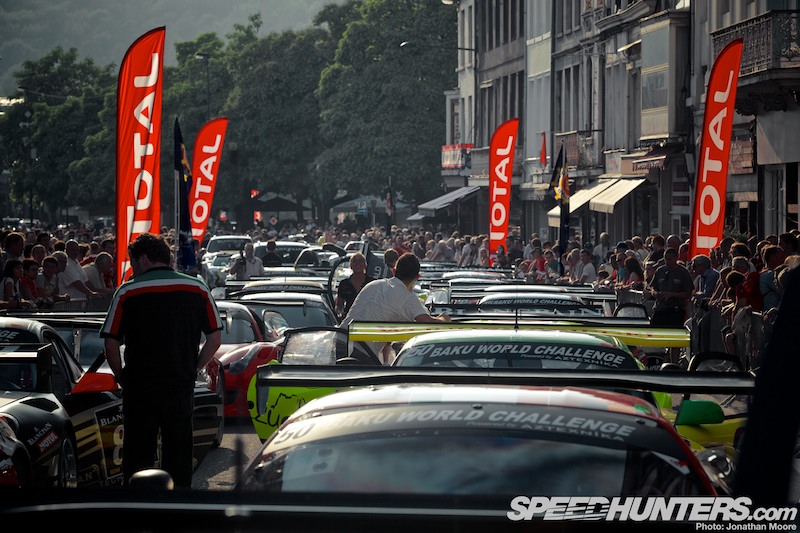
Several hours and a driver briefing later, and with the sun beginning to set, the cars once again lined up – this time to return to home base back at the track.
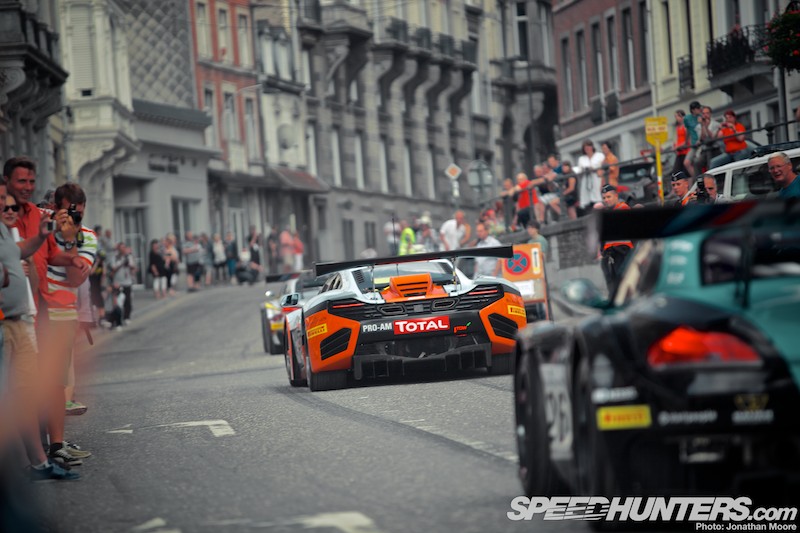
When I drove down the same roads half an hour later, it was difficult to believe the machinery that had just left…
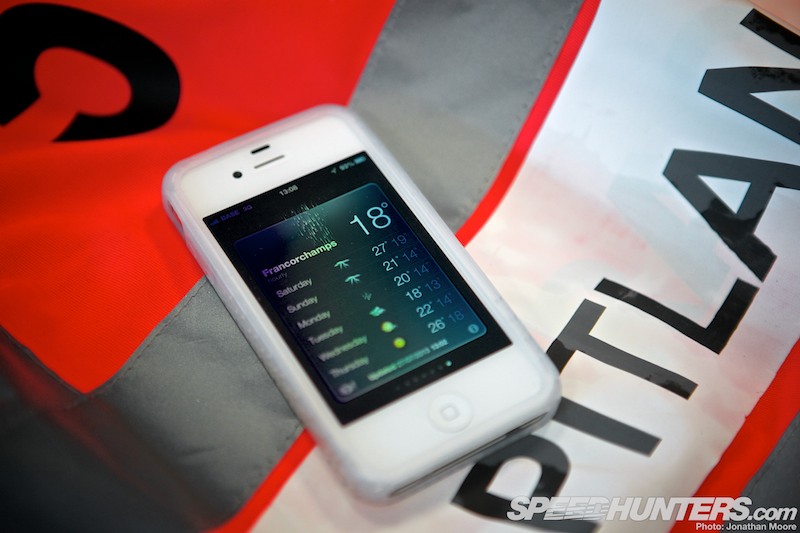
I know it can seem boring to go on about weather all the time, but it’s a fundamental part of the challenge of Spa, just as with the Nürburgring that sits at the other end of the chain of mountains.

The hardy spectators out around the track had been subjected to a cycle of a good hosing down and then blazing sunshine over the last couple of days: they were due a good race.
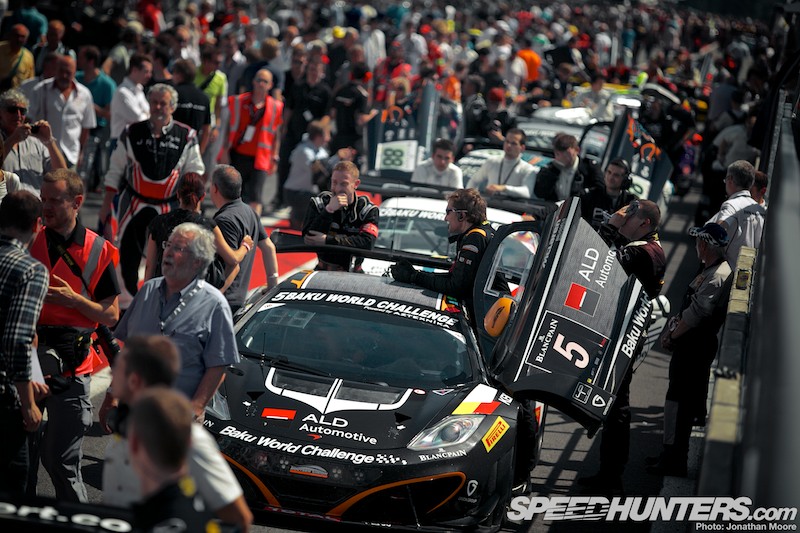
Not for the first time a grid girl was seen to take a tumble as the heat rose dramatically on the packed pre-grid. That was after thunder and lighting had pummelled the track just hours earlier.
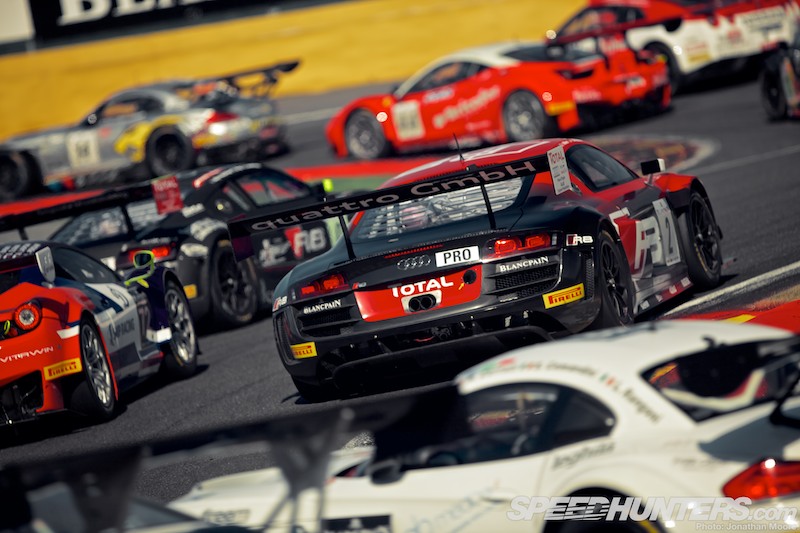
The start was the typically frantic affair. With so many cars, the opening hour was only ever going to be busy. With so many evenly-matched cars, it took a while for things to shake out and some gaps to open up – safety cars didn’t help, as Spa claimed early sacrifices.
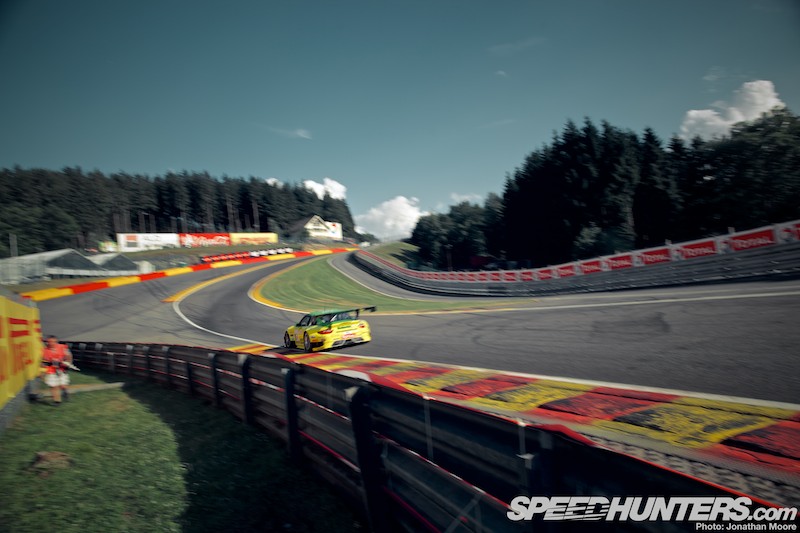
Mechanical woes took out several cars during the race, but Eau Rouge sucked in many others. So F1 drivers are now flat out in their gizmo-laden cars and Eau Rouge isn’t the challenge it once was? Rubbish. Watch a GT car thread the needle. During practice I’d watched from the entry to Eau Rouge, and they took my breath away. Over-powered and under-tyred (Pirellis…), GT3 cars look on the edge. There’s a whoosh of air as they pass. I actually had to stop taking pictures and stand back a bit almost immediately that I’d started: it was frightening and exhilarating at the same time.
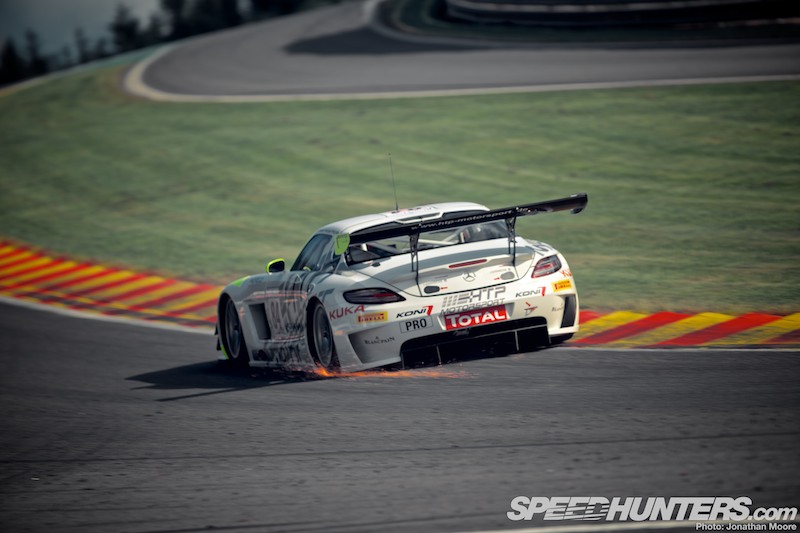
Eau Rouge is really four corners: the entry of Eau Rouge and then the exit of Raidillon: a darting left on entry, that swooping uphill right where the cars keel over and you hear the sound of bodywork being blasted off and see the resulting smoke and sparks, and then the off-camber left over crest and finally right kink for the run up the Kemmel straight.
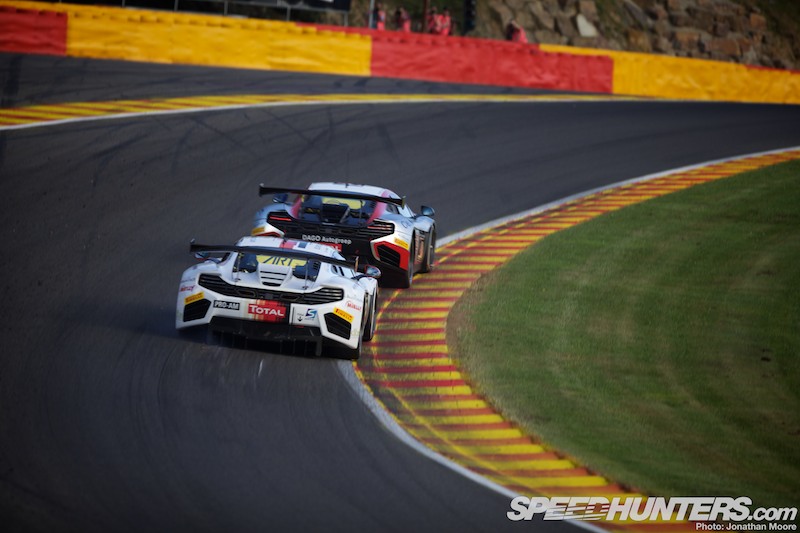
It’s mesmerising. Every year I could just stand here for hours… GT3s are squirmy in general – but fast – so they provide a much more visceral and entertaining sight than many categories.

If the spectators were feeling the heat during the race’s opening hours, then you can imagine how bad it was for the drivers. Behind early safety cars, you could see hands popping out through the small windows in an attempt to get some cool air, with some drivers even opening their doors through the final chicane.

A great improvement was the addition of LED position markers on the windscreens of each car: with so many cars and the PA not reaching all the way around the track, it was a great way to keep track of who was doing what.
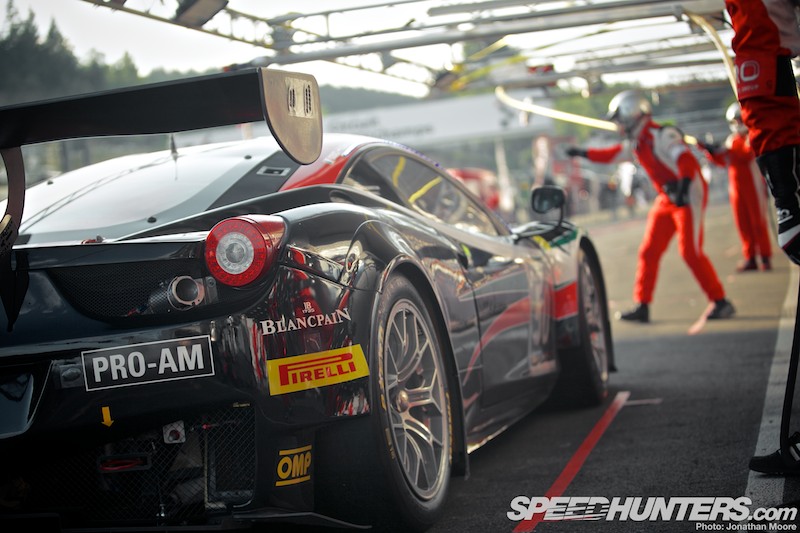
The race had a very different feel between Saturday and Sunday this year: the packed pits and searing heat of the opening day gave way to an overcast Sunday and a pit-lane that was far less busy following the number of cars that had dropped out.
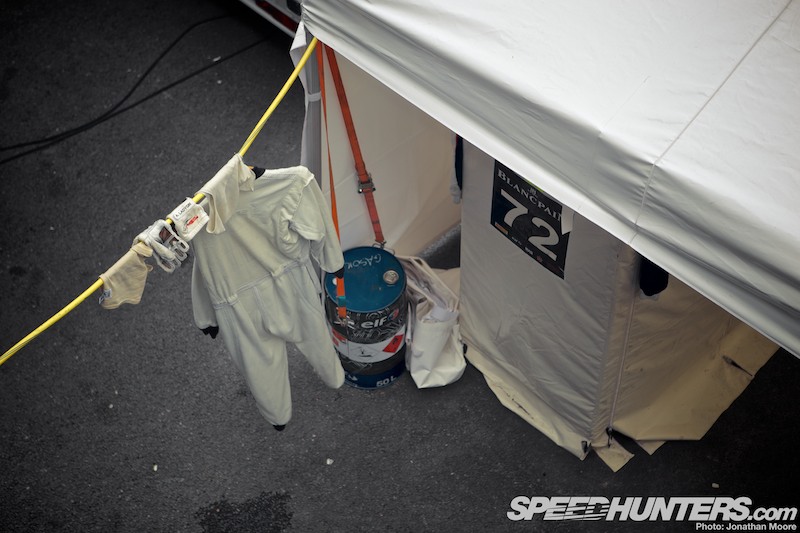
The rules have changed for the Blancpain Endurance Series this year, and like Le Mans everyone in the pit-lane has to wear a fire suit and helmet. I feel for the mechanics – at least I could pop back to the media centre after each foray into the pits and ditch my suit, whereas they had to live in their for two days… The next time I have to put a suit on can’t be far enough in the future…
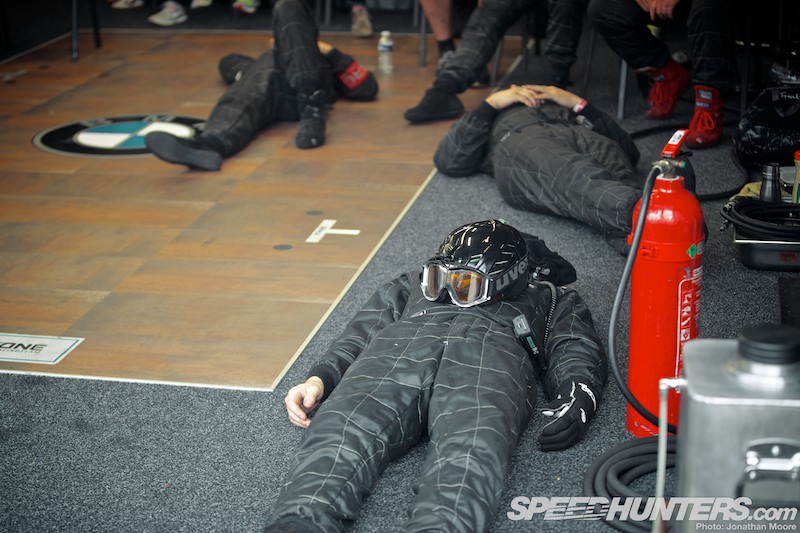
It’s the fatigue that is the signature of an endurance race: maybe that explains the more restrained nature of the race in the run to the flag – and the number of bodies strewn around garages.
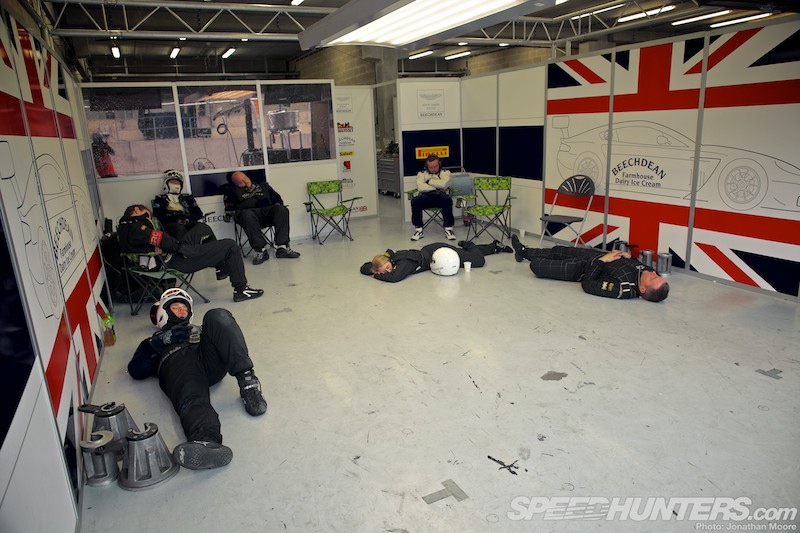
Cat-naps are brief. In seconds teams go from this…

… to this. I had literally just left the Beachdeen team to their gentle slumber, and looked round to see a pit-stop in full swing. Mechanics truly are the unsung heroes of endurance races.
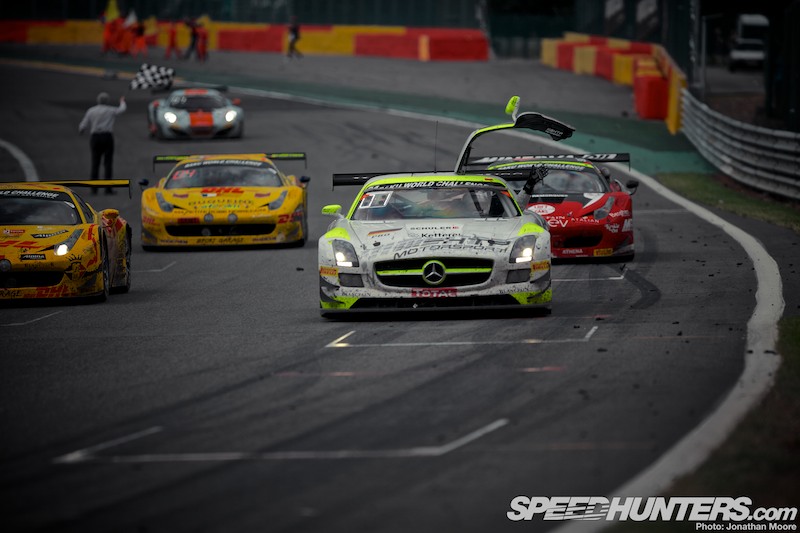
The race see-sawed between several teams, before boiling down to a straight fight between the mighty Manthey team on hand and Bernd Schneider’s HTP SLS on the other. You’d never bet against Schneider in Merc, and so it turned out: this would be his third 24-hour race victory following Dubai and Nürburgring.
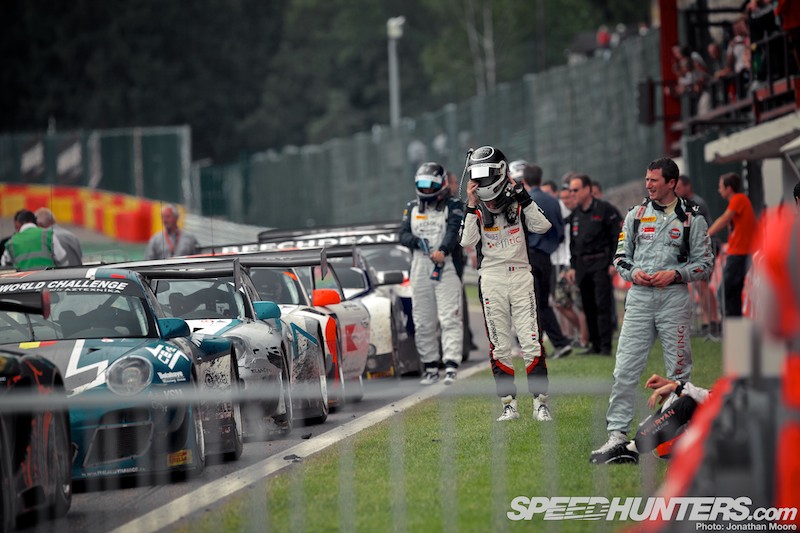
With the main attention focused on the winners and podium finishers I almost felt sorry for the rest of the drivers, as they slowly parked up, got out of their machines and took off HANS and helmets with only each other to understand just what they’d achieved. Finishing a 24-hour race can never be underestimated. But there really is a camaraderie for everyone who gets to the end: whether in a car, the marshals and officials or even the media and fans. Tiredness is somehow kept at bay, and it’s only this evening that it will likely hit – or maybe at the end of the sente…
Jonathan Moore
Instagram: speedhunters_jonathan
jonathan@speedhunters.com
Spa 24 Live timing and TV
Speedhunters at the 2013 Spa 24 Hours






Indonesia travel. Beautiful Indonesia.
https://ukkyancha.wordpress.com/home